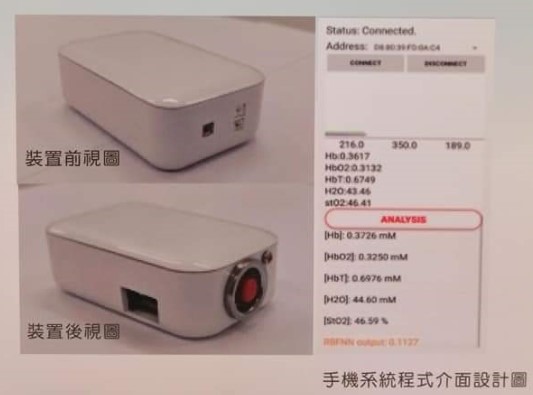
The first kit of optical detection severity of fever and Kawasaki disease in one second ~every home will need it~
2020-11-25
A form systemic vasculitis that affects mostly small and medium-sized vessels, Kawasaki disease (KD) is most commonly of found in children under the age of 5 years old. Though its etiology is unknown, KD has been the most frequent acquired heart disease in developing countries. Its incidence has increased over recent decades in many centuries, including Japan, Korea, Taiwan and China. The most severe complications of KD are coronary artery lesions (CAL), including dilation, fistula, aneurysm, arterial remodeling, stenosis, and occlusion. Coronary artery dilation has been found in about 30% of KD patients in the acute stage, diminishing the occurrence and regression of CAL is a vital part of treating KD. Therefore, identifying KD during the 5-10 days of disease onset is very important to prevent coronary artery lesion and prevent lifelong complication.
The clinical characteristics of KD include fever lasting for more than 5 days, as well as at least four of the following five symptoms (with the Kuo rapid memory method: diffuse mucosal inflammation with strawberry tongue and fissure lips (1 mouth), bilateral non-purulent conjunctivitis (2 eyes), unilateral cervical lymphadenopathy (3 fingers check lymph node), indurative angioedema over the hands and feet (4 limbs), dysmorphic skin rashes (5 or more skin rashes). The diagnosis of KD is mainly depend on clinical symptoms, that will cause making a diagnosis more difficulty and more subjective. According to the literature review, there are not any a non-invasive kit available till now for helping KD diagnosis in the world.
We innovate the first non-invasive method by using optical device that was constructed by Prof. Bor-Shyh Lin at National Chiao-Tung University. We took only within seconds to identify normal controls, children with fever and KD patients, that was accepted for published on (Journal of Allergy and Clinical Immunology, SCI IF: 14.110, ranking 1/26 in Allergy) as the first report of wireless optical monitoring system used in KD. In this study we provide evidence about changes in relative oxyhemoglobin (HbO2), deoxyhemoglobin (Hb), total hemoglobin (HbT), and H2O concentrations, and tissue oxygen saturation (StO2) during the different stages of KD and in control subjects. From our results, we found significant elevated H2O and decrease Hb relative levels in KD patients that was not found in normal control and fever group with a very good sensitivity (83.5%) and specificity (92.5%). In regarding to total white blood cell (WBC) counts, we also found SaO2 showed significant positive association with total WBC that will help parents to distinguish fever children with or without severe infection earlier.
In our innovation, we used wireless optical monitoring system firstly, a non-invasive, very quickly, precisely methods for distinguish severity of fever and Kawasaki Disease. That will help parents and clinician to make a diagnosis of KD and perform exactly treatment to prevent coronary artery lesion and lifelong complication. In the near future, every home will need this innovation at home.
Look for:
Authorized cooperation. R & D cooperation
InnoZone Booth No. A047
